From an amateur cook to the most seasoned pastry chef, no one is safe from shrinking pie crust. There’s nothing more disastrous than putting all of these efforts into making a pie, expecting a beautiful golden crust with an amazing filling and then ending up with a sunken pie from the oven.
Whether it’s an open pie or a closed one, a shrunken pie crust is extremely frustrating. It hurts our visuals, our aesthetics, our tastebuds, and the overall experience of having a pie.
So, can you do anything in advance to save your beautiful pie? Yes, of course. In fact, we’ll show you how to keep the pie crust from shrinking in this article. Let’s introduce you to our tips for preventing the pie crust from shrinking.
How to Keep Pie Crust from Shrinking?
Here are our top tips for you.
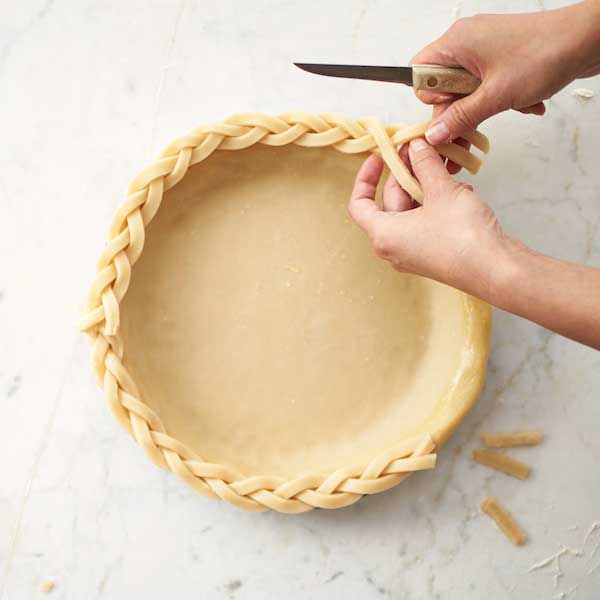
1. Get the Right Kind of Pan
Trust us, it really does. The recommended style of the pan to use for baking a pie is a ceramic pan; however, metal ones also get the job done. It makes it harder for the crust to slip down.
Pressing the edges a bit harder also helps it make a difference in helping the crust not slide when you take it out of the oven. Glass pans usually do the opposite as the slippery slope, in addition to the grease of the butter, provides little to no abrasion.
2. Keep Breathing Space around the Edges of the Crust
We often underestimate the importance of making our crust a bit larger than the intended size of the pan, as it will shrink a little bit. That’s just science. So preparing for it beforehand and making your crust at least half an inch larger than your pan gives that breathing space that it deeply requires.
3. Avoid Overworking the Dough
When you knead the dough, it creates gluten, making it elastic. While that might be amazing for making a beautiful pizza, it’s not good news for a pie. Putting the dough on a stand or hand mixer may sound like a dream, the act may bring more trouble than it is worth.
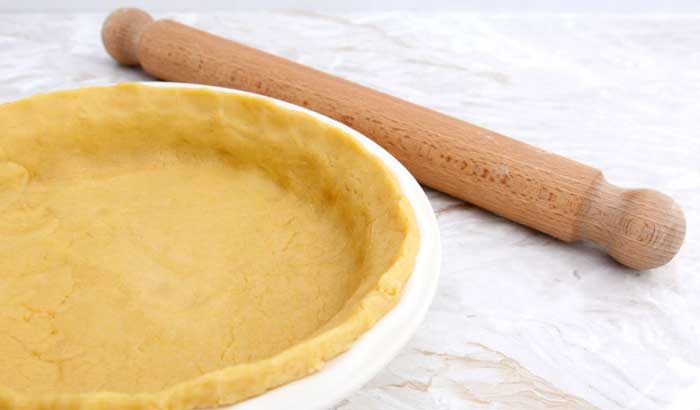
Overworking and kneading will release so much gluten that it can make your dough easier to work with and roll with a rolling pin. But when you put the dough under heat, it would shrink to half its original size.
3. Don’t Use Too Much Water
Water helps all the combined ingredients mix and hold together, forming the perfect dough. Though water is a great addition to any recipe, excess water might be the very reason the crust of your pie shrinks.
To understand why this happens, let us take a look into what happens when you place the pan in the oven. While the other ingredients start to cook in the heated oven, our basic knowledge of science can tell us that the water is evaporating.
So, by the end of the baking process, when you are left with pie crust minus the water you had added to it, it will surely seem a lot smaller than you had anticipated.
A good solution to this is to use butter as the water content in it is not very high. However, make sure the butter you are using is of good quality, or else you will face the same problem with your pie crust.
4. Give It Some Rest
Even if you have dealt with your dough with a loose hand and tried your best not to overwork it, it is still important to let it rest.
If you do not know why cooking experts include a stage to let doughs rest in their recipes, it is because it is another way to counter gluten, which will, in turn, lead to a great crust.
Let your dough relax in a cool place for about thirty minutes to an hour. As it relaxes, it will release any of the elasticity it may have developed after you kneaded the dough.
5. Chill the Dough for Best Results
At this stage of baking, think about some of the major ingredients you have added to your dough. One of the ingredients you must have used is butter, and this ingredient plays a key role in how your dough will turn out.
When you place the softened dough into a hot oven, the dough is likely to become flat and shrink, which is not what you want for a pie crust.
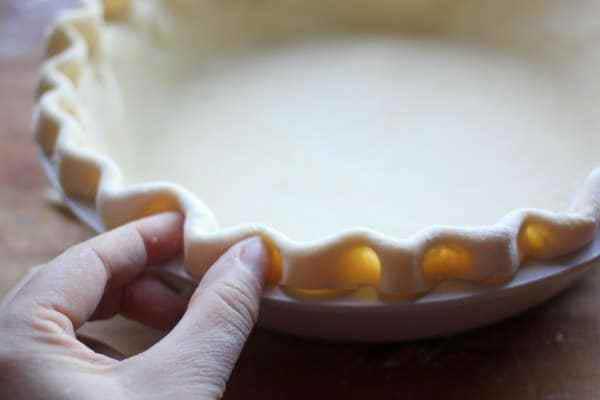
Instead, if you let it chill, you are letting the fat in the butter solidify again, which stops the gluten from sticking together in one clump. Instead of a shrunken dough, you will end up with layers or sheets of fat that create the flakiness of your crust.
Moreover, as previously mentioned, you are also allowing it time to rest, which is another key component to the whole pie-making process.
So, before placing your pie in the oven, make sure to chill it in the fridge for a while.
6. Pie Weights for an Even Crust
Have you ever wondered why an entirely separate baking tool is called pie weights? These weights can, in fact, help you bake the best pie without it shriveling upon itself.
Line the pie crust in your pan with pie weights. Do not fret if you don’t have them lying around your house. It is completely fine to substitute them with uncooked rice or fried beans).
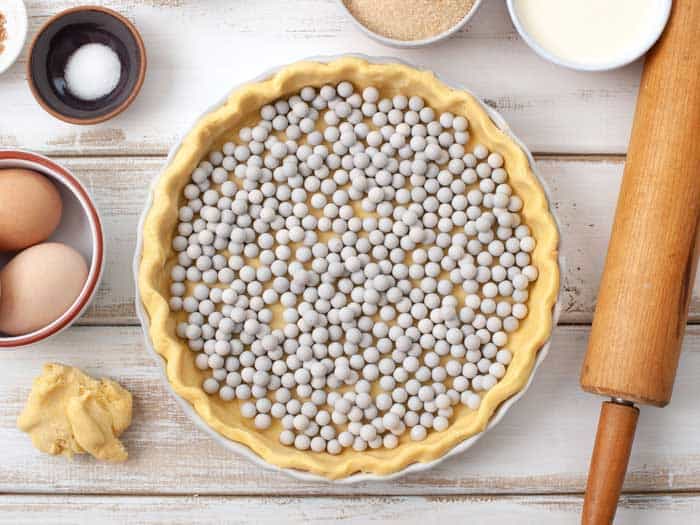
The weights on your pie crust apply pressure around the dough so that while it is baking, it does not start bubbling up as that can cause it to shrink.
7. Start at a High Temperature
For about 15 minutes, baking the pie at high temperatures at around 400 to 425-degree celsius would help in restructuring the crust of the pie in the middle of the process. After the fifteen minutes have passed, then you can take the temperature back to what your recipe recommended.
Some Additional Tips That You Can Use
To get that picture-perfect pie, you can further implement these few tips and tricks across the best pastry chefs:
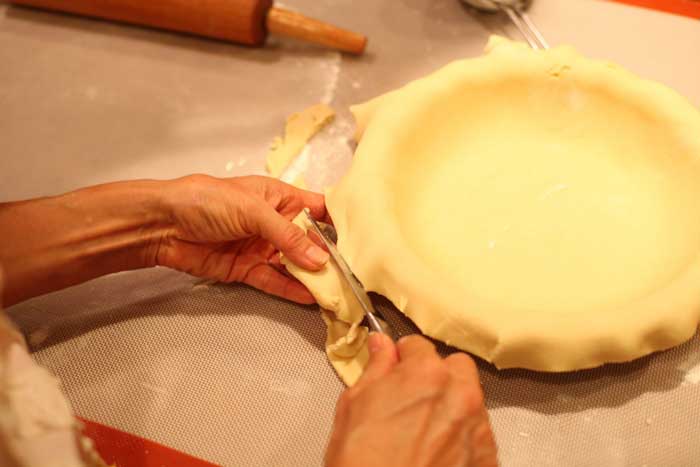
Use a Fork to Prick at the Crust before Baking
This ensures ventilation, which otherwise may inhibit the crust from rising. It also stops from substandard baking experience and helps them rise beautifully and gives the appearance of an air pockets
Keep an Eye on the Edges of the Trim
There’s a reason why chefs strive for the golden crust. Too dark, and you end up losing the bounciness. To ensure that your crust doesn’t get too dark, protect it with a thin aluminum foil. It stops the foil from burning and getting that dark color. To get the gold, take the help of the silver!
Wrapping up
Pies are a household symbol of celebrations and housewarming gifts for good reason. The effort that goes behind the pie crust alone is tremendous. Baking an entire pie is therefore saved for special occasions.
As now you know how to keep pie crust from shrinking, and with these tips and tricks, you will never have to see a shrunken pie crust ever again. Now, let’s bake!

